The Waltham “Crescent Street” Movement: The Model 1870: Woerd’s Patent Ratchet Click
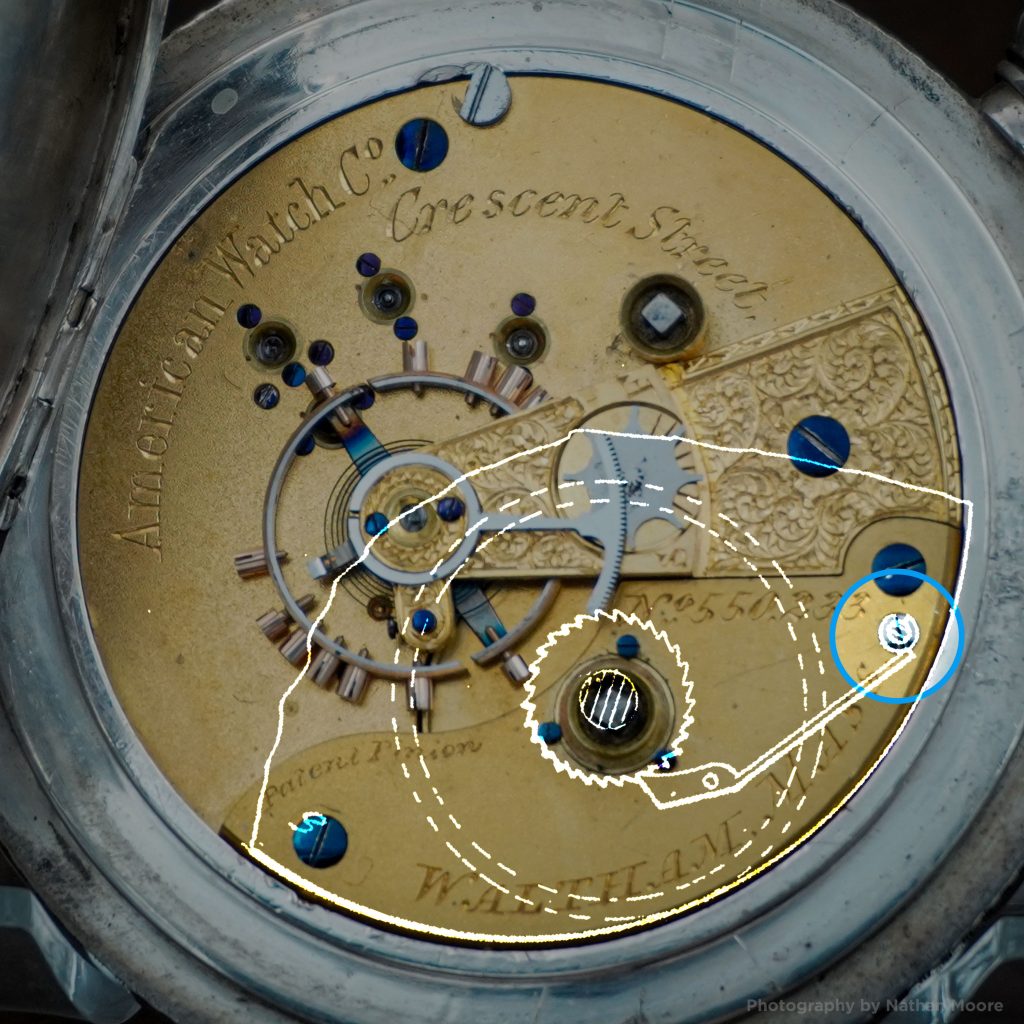
When the “Crescent Street” movement first debuted, it included several new features designed to quickly capture the growing railroad market. These features were detailed in advertisements published by Robbins & Appleton, general sales agents for the American Watch Company.
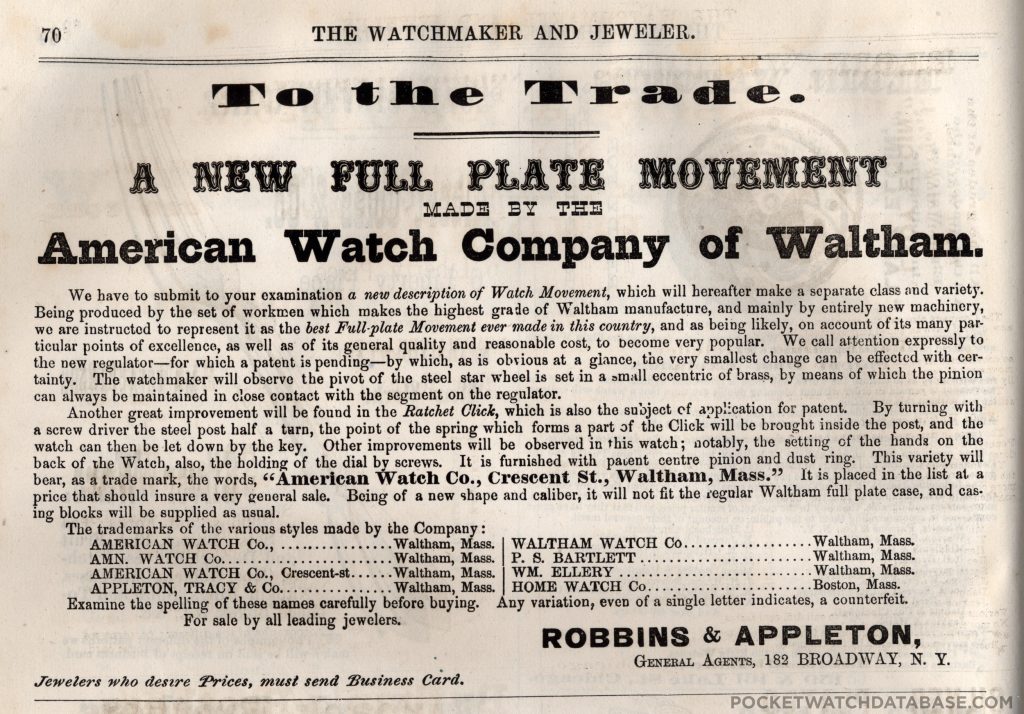
Woerd’s Patent Ratchet Click
One of the more intriguing mechanisms was Charles Vander Woerd’s patent ratchet click.
At the time, American watch companies were attempting to find ways to provide an easy and efficient way to “let down” the mainspring when the watch required service. Without releasing the stored tension in the mainspring, the watch could be damaged as the plates are disassembled and the energy is suddenly expelled.
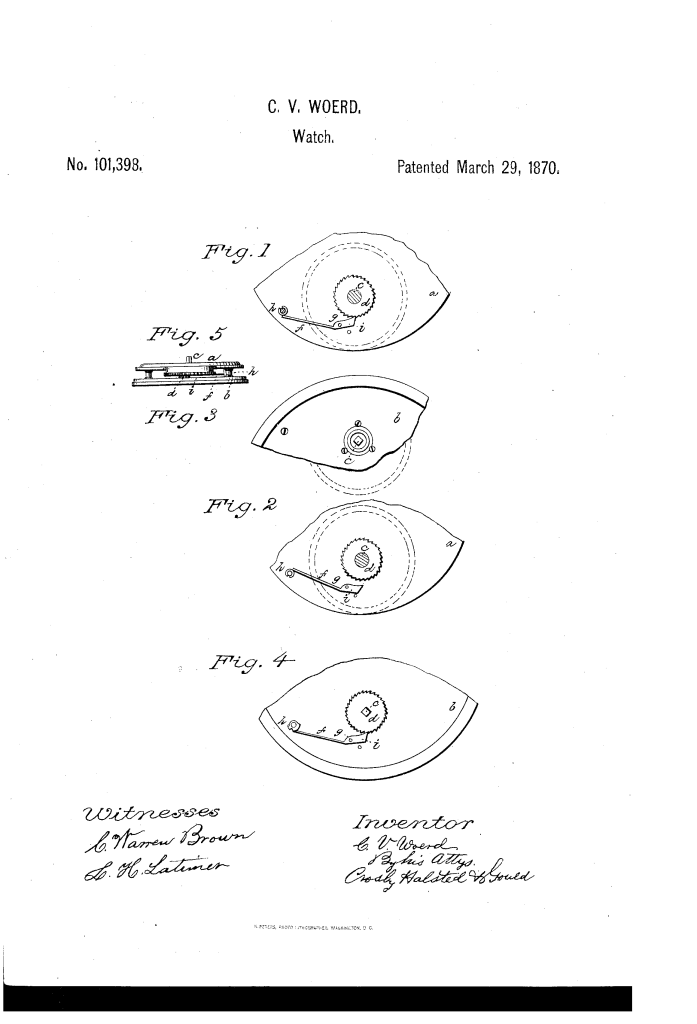
Woerd aimed to achieve the let-down process by means of a screw that engaged with the ratchet click to move the click away from the barrel teeth so the mainspring could be safely unwound. He described his invention in the patent application as the “arrangement of parts in a watch, by which, for convenience of watch-makers or repairers, in assembling the movement, and in taking it does for cleaning or repairs, the detailing-pawl, which holds the mainspring, is thrown in or out of gear with the teeth of the ratchet, fixed on the mainspring winding-arbor.”
Period advertisements promoted the new design: “Another great improvement will be found in the Ratchet Click, which is also the subject of application patent. By turning with a screw driver the steel post half a turn, the point of the spring which forms a part of the Click will be brought inside the post, and the watch can then be let down by the key.”
As suggested by early advertisements, Woerd had not yet received his patent when the Model 1870 Crescent Street was introduced to the market. The patent was finally granted in March 1870.
While Woerd’s patent ratchet click was implemented from the first run of Crescent Street movements, the company discontinued the device in favor of a different design after two years. This change was accompanied by experiments in various setting mechanisms to replace the original key-set implementation.
Identification & Production
Model 1870 Crescent Street movements carrying serial numbers lower than 650,000 are fitted with the patented ratchet click. These can also be identified by the additional screw next in the barrel bridge. This screw functions to engage and disengage the pawl from the mainspring ratchet wheel. It should be noted that this screw can easily be mistaken as an ordinary case screw by uninformed watchmakers – a possible reason the device was discontinued. Imagine turning that screw to take of the barrel bridge and unintentionally releasing all the energy in the mainspring at once.
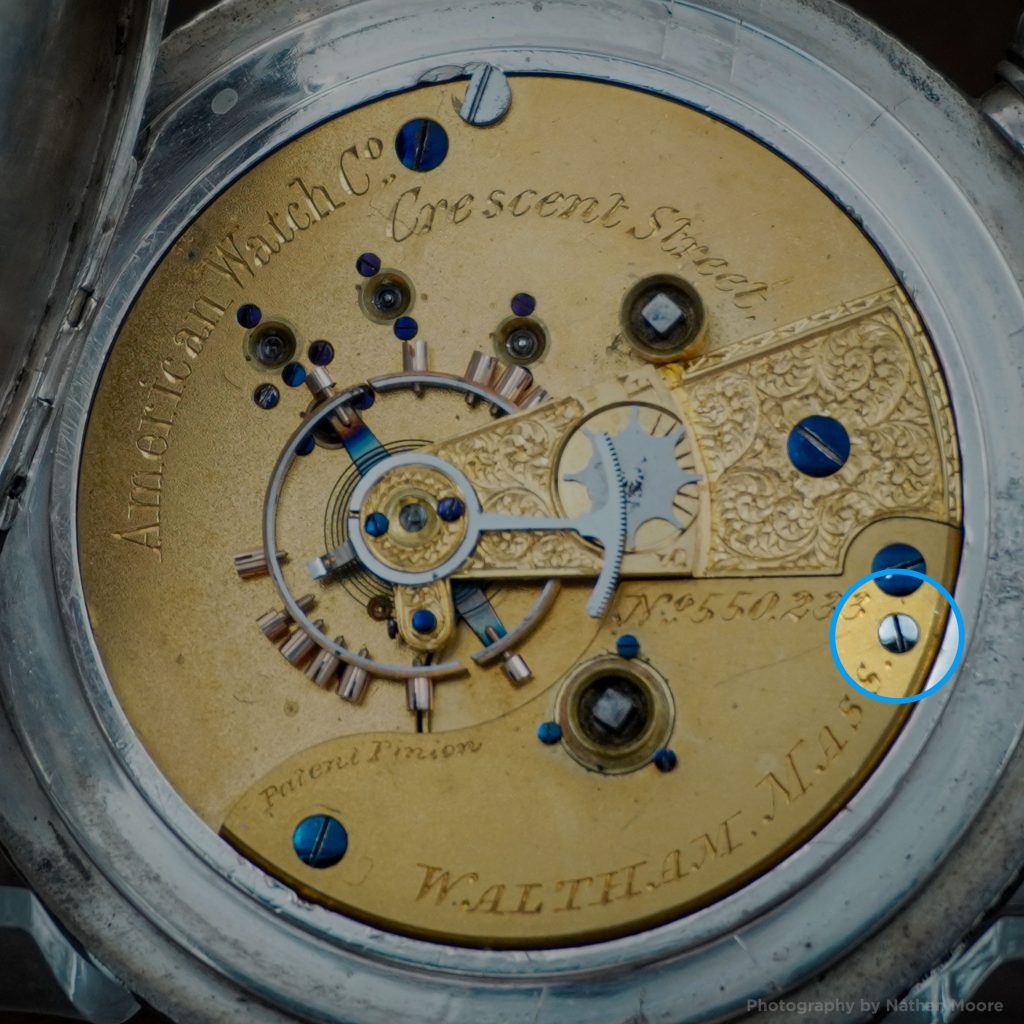
The estimated production for the Model 1870 Crescent Street movements fitted with Woerd’s patent ratchet click is 10,880 out of 17,880 total, accounting for approximately 60% of production.

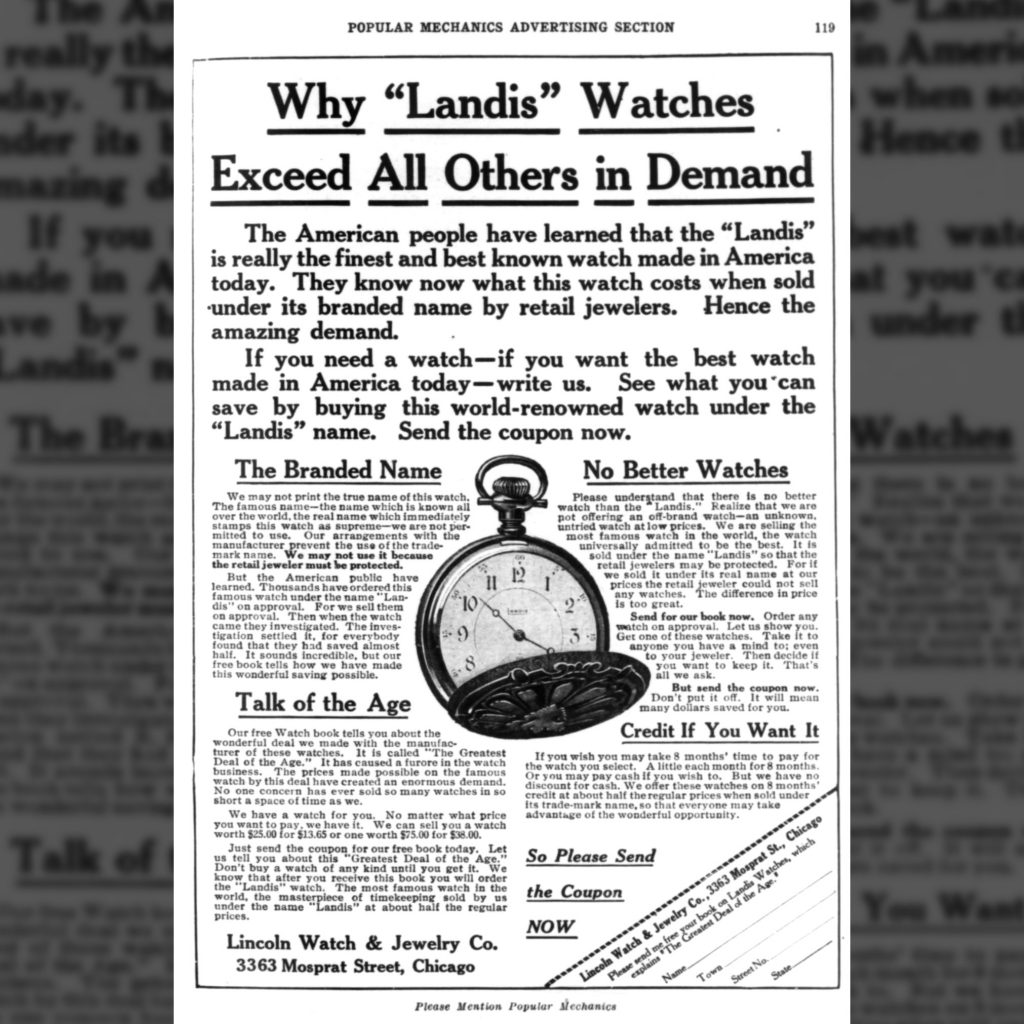
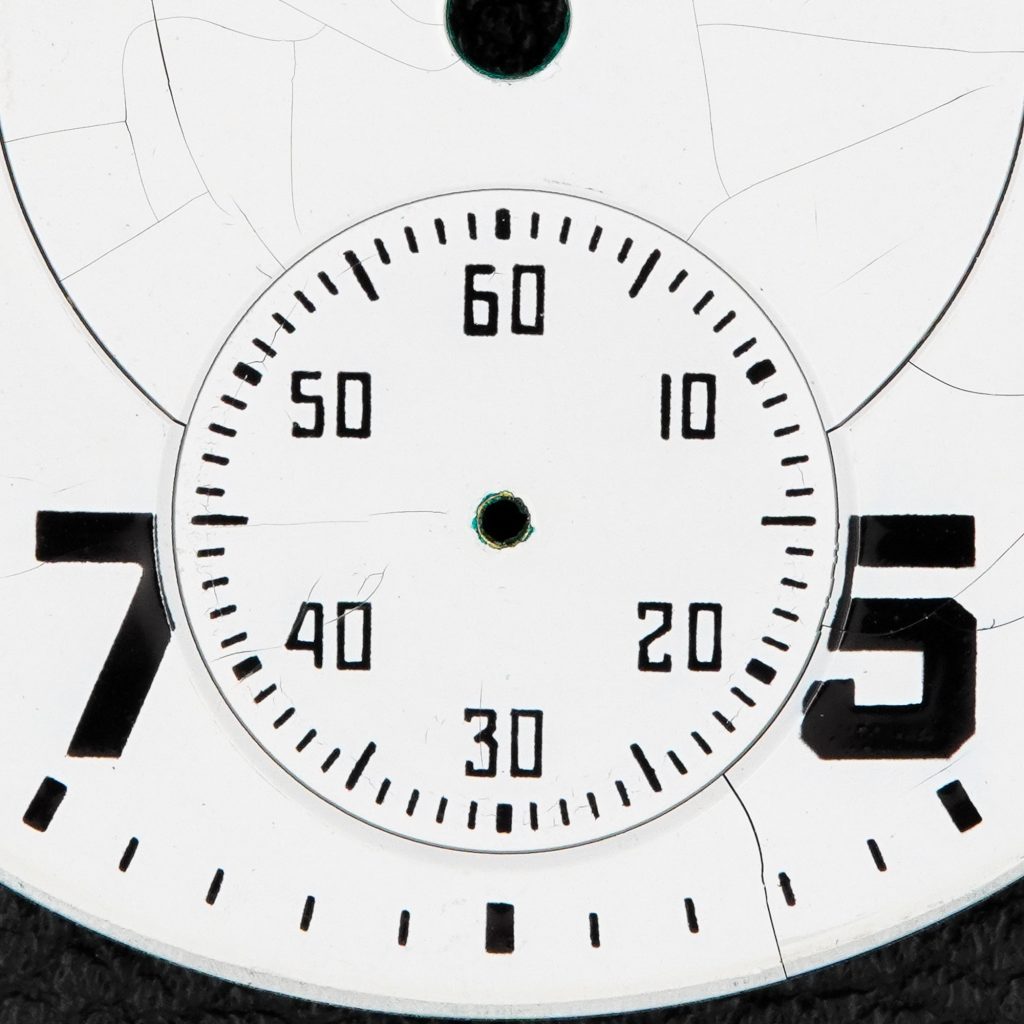
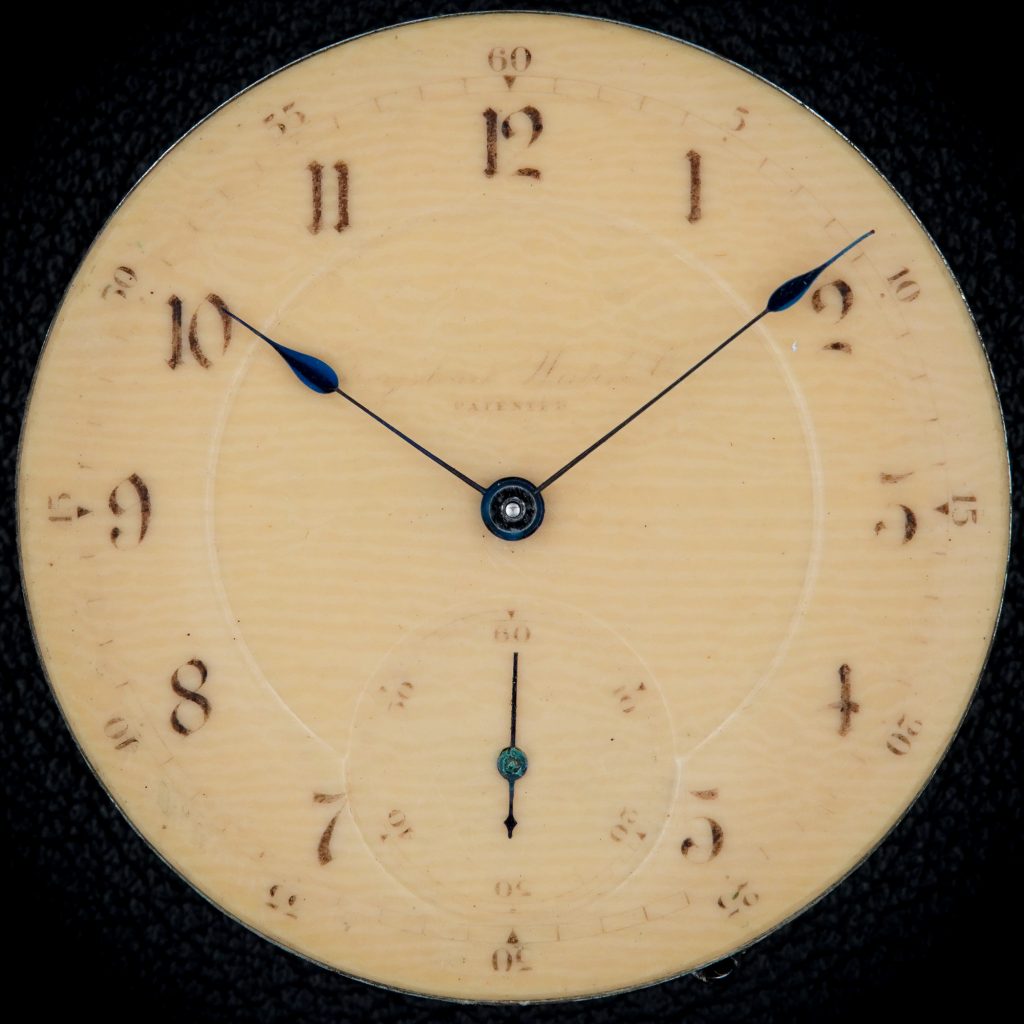
Ahha there is that screw! Very impressive info…and one I will look out for. Thanks Nathan for your continued expertise …
I am an electrical engineer. Pocket watches are a recently started hobby. My IT department is constantly reminding us to check the spelling of URLs (links) and email addresses. I found it interesting that in the advertisement you published with this blog is the request to check the trademark spelling. Under the list of trademarks, find “Any variation, even of a single letter indicates, a counterfeit”. The tricks of modern day scammers aren’t new. The consumers of these watches faced the same problem where the criminals used the identical technique to ‘fool’ the client into the belief they are legit. Although new to this hobby, I suspect the practice continues today in complete antique watches and their replacement parts. The caution from Robbins & Appleton are as relevant today as they were 155 years ago.